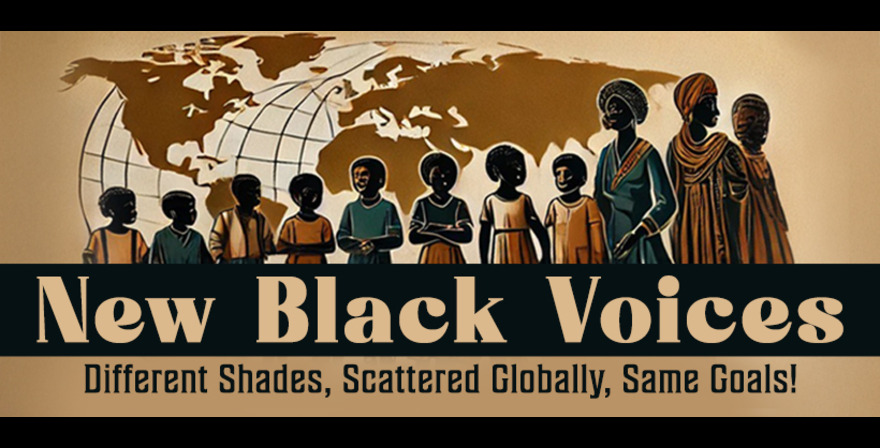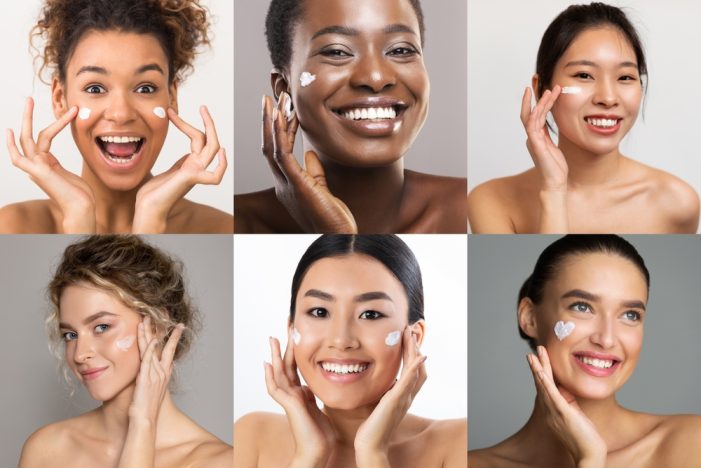By Pearl Phillip | Editorial credit: Prostock-studio / shutterstock.com
The beauty and wellness industries have long been powerful forces in shaping societal perceptions of beauty, identity, and self-worth. However, these industries have historically excluded large segments of the population, particularly people of color, different body types, and marginalized communities. In recent years, a significant shift has occurred, driven by consumer demand and cultural conversations around diversity, inclusion, and representation.
The discussion surrounding diversity and representation in beauty and wellness is crucial, as it highlights the need for inclusive marketing, a broader representation of skin tones and body types in campaigns, and corporate responsibility in addressing the needs of all consumers. This analysis explores these themes, delving into personal experiences with beauty products and the lack of options for certain skin tones or hair types. Finally, we will examine the cultural impact of these discussions, particularly the changes within the beauty and wellness industries, which are pushing brands to become more inclusive and responsive to the needs of a diverse consumer base.
- The Importance of Inclusive Marketing and Representation
One of the most significant aspects of the conversation around diversity in beauty and wellness is the importance of inclusive marketing. For decades, beauty campaigns have been dominated by narrow beauty standards, typically centered on Eurocentric features, fair skin, thin bodies, and straight hair. These narrow standards have excluded many people from feeling seen or represented in the beauty and wellness spaces.
Inclusive marketing is creating campaigns that feature people from various backgrounds, ethnicities, body types, ages, and gender identities. This means moving away from traditional notions of beauty and embracing the idea that beauty comes in many forms. Brands like Fenty Beauty, launched by Rihanna in 2017, are often cited as leading examples of inclusive marketing. Fenty’s 40-shade foundation range revolutionized the industry by offering makeup that catered to a wide array of skin tones, which had been sorely lacking in the industry.
Similarly, brands like Glossier, Dove, and Savage X Fenty have embraced inclusive marketing by showcasing models of various body types, ages, and genders. These campaigns resonate with a broader audience, as they reflect the reality of diversity in society rather than a narrow idealized version of beauty.
Cultural Impact:
The push for more inclusive marketing is part of a broader cultural shift that challenges long-standing beauty norms and encourages more authentic representations of beauty. As consumers demand to see themselves reflected in their products and advertisements, the beauty industry is being forced to evolve. This shift empowers individuals from all backgrounds to embrace their unique beauty, fostering a culture of self-acceptance and inclusivity. It also sends a powerful message to future generations that beauty is not limited to a single look or body type but exists in many different forms.
- The Role of Corporate Responsibility in Promoting Diversity
Corporate responsibility in promoting diversity goes beyond simply featuring diverse models in advertisements. It requires brands to take meaningful actions that address the systemic barriers to inclusion within the beauty and wellness industries. This includes ensuring product formulations cater to all skin tones and hair types, fostering diversity in leadership roles within companies, and promoting inclusivity through supply chains and corporate policies.
Many beauty brands are recognizing the importance of corporate responsibility when it comes to diversity. For instance, Estée Lauder and L’Oréal have pledged to improve diversity across their brands by expanding their product ranges, hiring more diverse talent, and creating more inclusive work environments. Similarly, smaller brands like Uoma Beauty, founded by Nigerian-born Sharon Chuter, center diversity and inclusivity in their product offerings and brand ethos. Uoma’s motto, “Beauty for All,” reflects the company’s commitment to representing all people, particularly those historically excluded from the beauty conversation. Chuter’s non-profit, Pull Up for Change, which challenged corporations to go beyond posting black squares and making donations, and instead make public the number of Black employees they have in their organizations (HQ & satellite offices) and on their leadership teams. Chuter demanded accountability and transparency as the first step to building equity and creating equality for Black professionals. With the support of leading voices and influencers within the Beauty and Lifestyle community, encouraged consumers to vote with their wallets and hold off spending with brands until they release this data to the public.
Furthermore, many beauty brands now engage in social justice initiatives and align themselves with movements like Black Lives Matter or LGBTQ+ rights. This corporate activism is essential to fostering a culture of inclusivity and ensuring that beauty brands do more than pay lip service to diversity—they must actively contribute to positive social change.
Cultural Impact:
The role of corporate responsibility in promoting diversity is reshaping consumer expectations. Consumers increasingly hold brands accountable for their actions, not just words. This cultural shift toward corporate accountability leads to more transparent, ethical, and inclusive business practices. Brands that fail to prioritize diversity and inclusion risk losing the trust and loyalty of their consumers, particularly younger generations who prioritize social justice and ethical consumption. The beauty and wellness industries are being pushed to confront their historical lack of inclusivity and are being called upon to contribute to a more equitable and just society actively, instilling a sense of justice and fairness in the industry.
- Personal Experiences with Beauty Products and the Lack of Options
One of the most significant drivers of the conversation around diversity and representation in beauty and wellness is the personal experiences of consumers who have long struggled to find products that cater to their specific needs. Historically, beauty products were designed with a narrow demographic in mind, often leaving people of color and those with textured hair without viable options. For instance, darker skin tones were usually excluded from foundation ranges, and products for curly, coily, or afro-textured hair were rare.
Many consumers have shared their frustrations on social media and in beauty forums, recounting experiences of not finding a foundation that matched their skin tone or a hair product that worked for their hair type. These stories, amplified by the reach and influence of social media, have created a groundswell of demand for more inclusive beauty products, forcing brands to recognize that they can no longer afford to ignore entire population segments.
Brands are beginning to respond to this demand by expanding their product lines to be more inclusive. Fenty Beauty’s wide shade range set a new standard for inclusivity, and many brands have followed suit, introducing products that cater to a wider variety of skin tones and hair types. SheaMoisture, for example, has become a go-to brand for people with textured hair, offering a wide range of products specifically formulated for natural curls and coils. The success of these inclusive brands demonstrates the power of representation in driving consumer loyalty and brand growth.
Cultural Impact:
The personal stories of consumers excluded from the beauty industry drive a cultural shift toward inclusivity and representation. These conversations create a sense of community and shared experiences, empowering individuals to demand products that cater to their unique needs and push the beauty industry to expand its offerings. This shift is also contributing to a broader redefinition of beauty that is more inclusive, diverse, and reflective of the real-world experiences of people from all backgrounds. By listening to the experiences of underrepresented consumers, beauty brands are being pushed to innovate and create products that serve a more diverse audience, fostering a sense of belonging and unity in the industry.
Cultural Impact: How Diversity and Representation are Changing the Beauty and Wellness Industries
The discussion surrounding diversity and representation in beauty and wellness profoundly impacts how these industries operate. Beauty and wellness brands must rethink their strategies and products as consumers demand more inclusive marketing, better representation of all skin tones and body types, and greater corporate responsibility.
One of the most significant cultural shifts is the growing expectation that beauty brands must cater to all consumers, not just a select few. This shift is evident in how brands expand their product ranges to include more shades, textures, and formulations that cater to a diverse audience. In addition to increasing their product lines, many brands embrace a more inclusive marketing approach, featuring models of all races, genders, and body types in their campaigns.
This cultural shift is also reflected in the rise of brands that center on diversity and inclusivity in their business models. Brands like Fenty Beauty, Uoma Beauty, and Glossier are examples of companies that have built their success on the principles of inclusivity, catering to the needs of people who have historically been left out of the beauty conversation. These brands are meeting consumer demand and setting a new standard for the industry, proving that diversity is not just a moral imperative—it is also a business opportunity.
Another significant cultural impact is the beauty industry’s growing demand for transparency and accountability. Consumers want to know that the brands they support are committed to ethical practices, from sustainable sourcing to fair labor practices. This expectation is driving a new era of corporate responsibility in beauty and wellness, where brands must offer diverse products and demonstrate a commitment to inclusivity and social justice at every level of their business.
Finally, the conversation around diversity and representation in beauty and wellness contributes to a broader cultural redefinition of beauty. The narrow standards of beauty that have long dominated the industry are being challenged by a more inclusive, expansive vision of what it means to be beautiful. This new vision embraces people of all races, body types, genders, and ages, and it is helping to create a more inclusive society where everyone can feel seen, valued, and beautiful.
Meaningful Change
The discussion surrounding diversity and representation in the beauty and wellness industries drives meaningful change in how brands operate, and society defines beauty. As consumers demand more inclusive marketing, better representation of all skin tones and body types, and greater corporate responsibility, the beauty and wellness industries are forced to adapt. The cultural impact of these discussions is profound, as they are pushing brands to become more inclusive, accountable, and responsive to the needs of a diverse consumer base.
The rise of inclusive beauty brands, the demand for transparency, and the redefinition of beauty itself all show that the beauty industry is fundamentally transforming. By embracing diversity and representation, the beauty and wellness industries have the opportunity to meet consumer demand and contribute to a more inclusive and equitable society. As these conversations evolve, they will undoubtedly shape the future of beauty, ensuring that everyone, regardless of their background, can find products and experiences that make them feel beautiful, confident, and valued.
Pearl Phillip is the host of Beauty, Health & Wellness Radio Show and Podcast, and Managing & Editor-in-Chief of Caribbean American Weekly, The Immigrant’s Journal & Workers’ World Today Publications and a Consultant with New Black Voices. Learn more at http://www.

